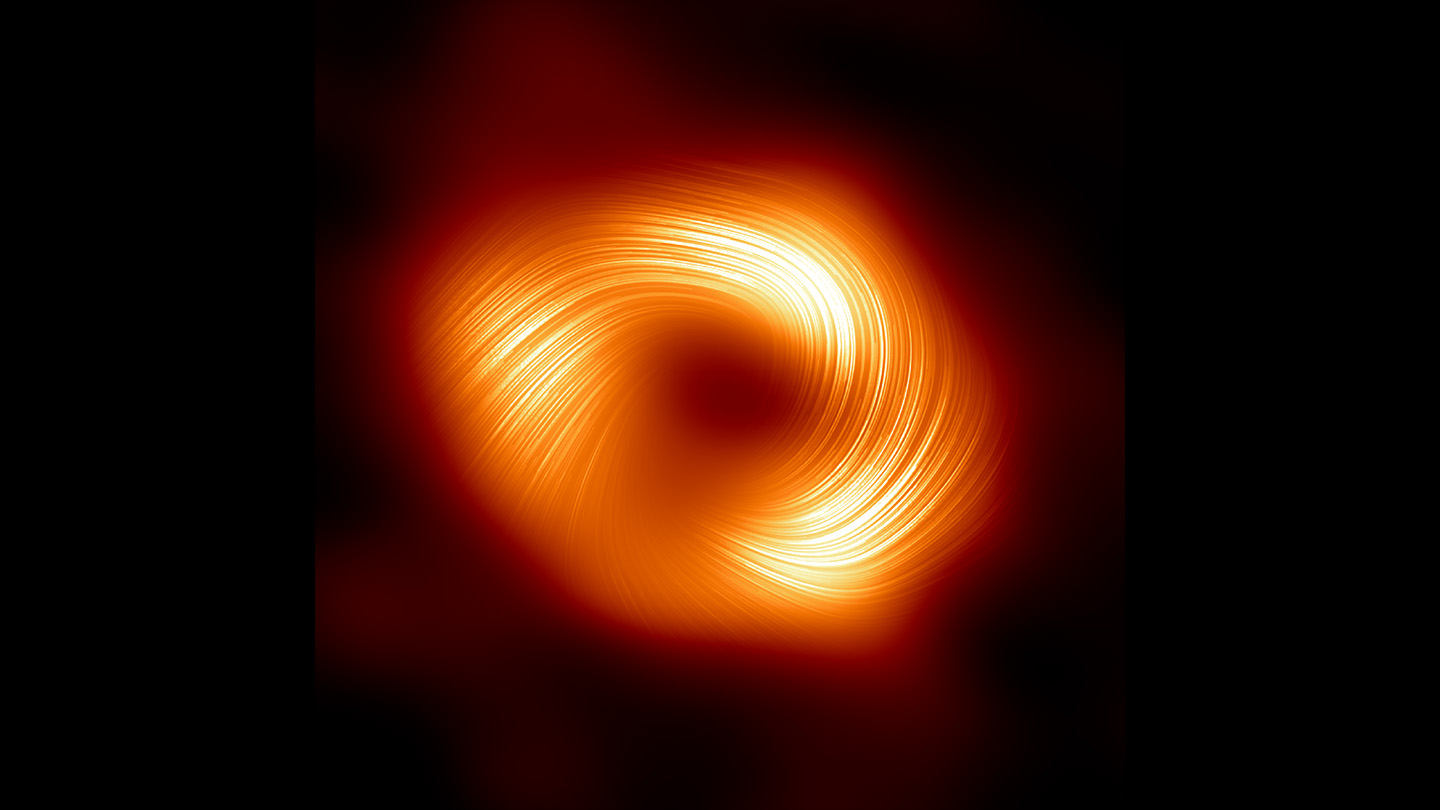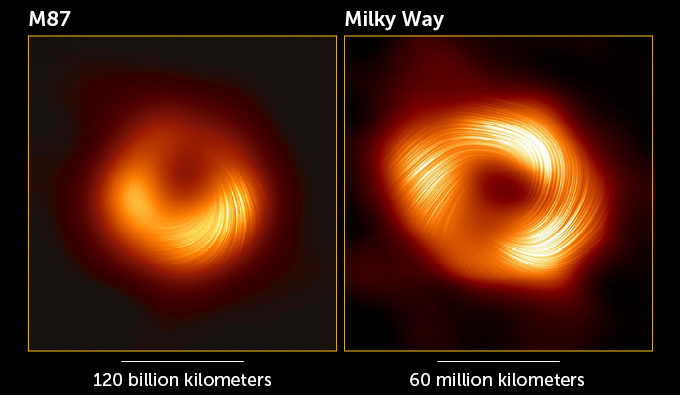astronomer: A scientist who works in the field of research that deals with celestial objects, space and the physical universe.
astrophysics: An area of astronomy that deals with understanding the physical nature of stars and other objects in space. People who work in this field are known as astrophysicists.
black hole: A region of space having a gravitational field so intense that no matter or radiation (including light) can escape.
core: Something — usually round-shaped — in the center of an object.
cosmic: An adjective that refers to the cosmos — the universe and everything within it.
disk: A round, flat and usually fairly thin object. (in astronomy) A rotating cloudlike collection of gases, dust or both from which planets may form. Or the structure of certain large rotating bodies in the cosmos, including spiral galaxies.
elliptical: Having the shape of an ellipse, which is an oval shape.
evolve: (adj. evolving) To change gradually over generations, or a long period of time. Nonliving things may also be described as evolving if they change over time. For instance, the miniaturization of computers is sometimes described as these devices evolving to smaller, more complex devices.
galaxy: A group of stars — and usually invisible, mysterious dark matter — all held together by gravity. Giant galaxies, such as the Milky Way, often have more than 100 billion stars. The dimmest galaxies may have just a few thousand. Some galaxies also have gas and dust from which they make new stars.
insight: The ability to gain an accurate and deep understanding of a situation just by thinking about it, instead of working out a solution through experimentation.
journal: (in science) A publication in which scientists share their research findings with experts (and sometimes even the public). Some journals publish papers from all fields of science, technology, engineering and math, while others are specific to a single subject. Peer-reviewed journals are the gold standard: They send all submitted articles to outside experts to be read and critiqued. The goal, here, is to prevent the publication of mistakes, fraud or work that is not novel or convincingly demonstrated.
light-year: The distance light travels in one year, about 9.46 trillion kilometers (almost 6 trillion miles). To get some idea of this length, imagine a rope long enough to wrap around the Earth. It would be a little over 40,000 kilometers (24,900 miles) long. Lay it out straight. Now lay another 236 million more that are the same length, end-to-end, right after the first. The total distance they now span would equal one light-year.
magnet: A material that usually contains iron and whose atoms are arranged so they attract certain metals.
magnetic field: An area of influence created by certain materials, called magnets, or by the movement of electric charges.
mass: A number that shows how much an object resists speeding up and slowing down — basically a measure of how much matter that object is made from.
Milky Way: The galaxy in which Earth’s solar system resides.
network: A group of interconnected people or things. (v.) The act of connecting with other people who work in a given area or do similar thing (such as artists, business leaders or medical-support groups), often by going to gatherings where such people would be expected, and then chatting them up. (n. networking)
particle: A minute amount of something.
plasma: (in chemistry and physics) A gaseous state of matter in which electrons separate from the atom. A plasma includes both positively and negatively charged particles.
radio waves: A part of the electromagnetic spectrum that people often use for long-distance communication. Longer than the waves of visible light, radio waves are used to transmit radio and television signals. They also are used in radar. Many astronomical objects also radiate some of their energy as radio waves.
sun: The star at the center of Earth’s solar system. It is about 27,000 light-years from the center of the Milky Way galaxy. Also a term for any sunlike star.
telescope: Usually a light-collecting instrument that makes distant objects appear nearer through the use of lenses or a combination of curved mirrors and lenses. Some, however, collect radio emissions (energy from a different portion of the electromagnetic spectrum) through a network of antennas.
wave: A disturbance or variation that travels through space and matter in a regular, oscillating fashion.









